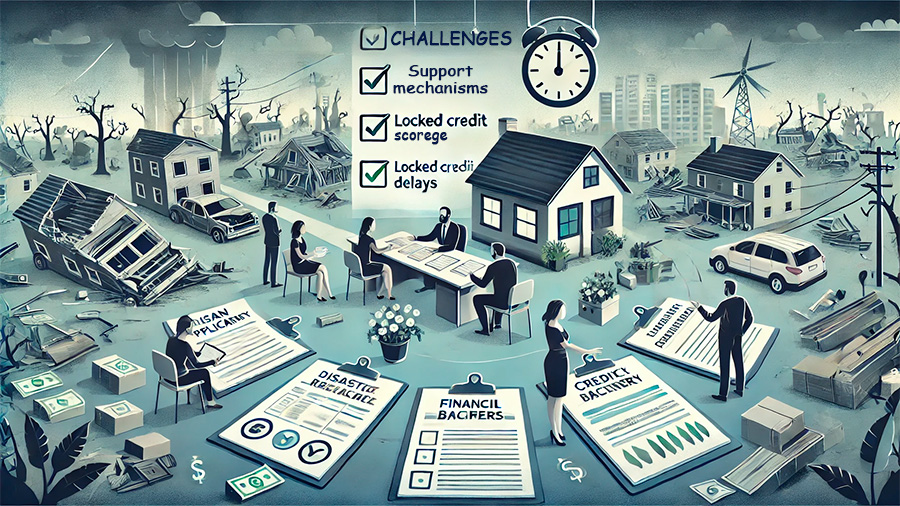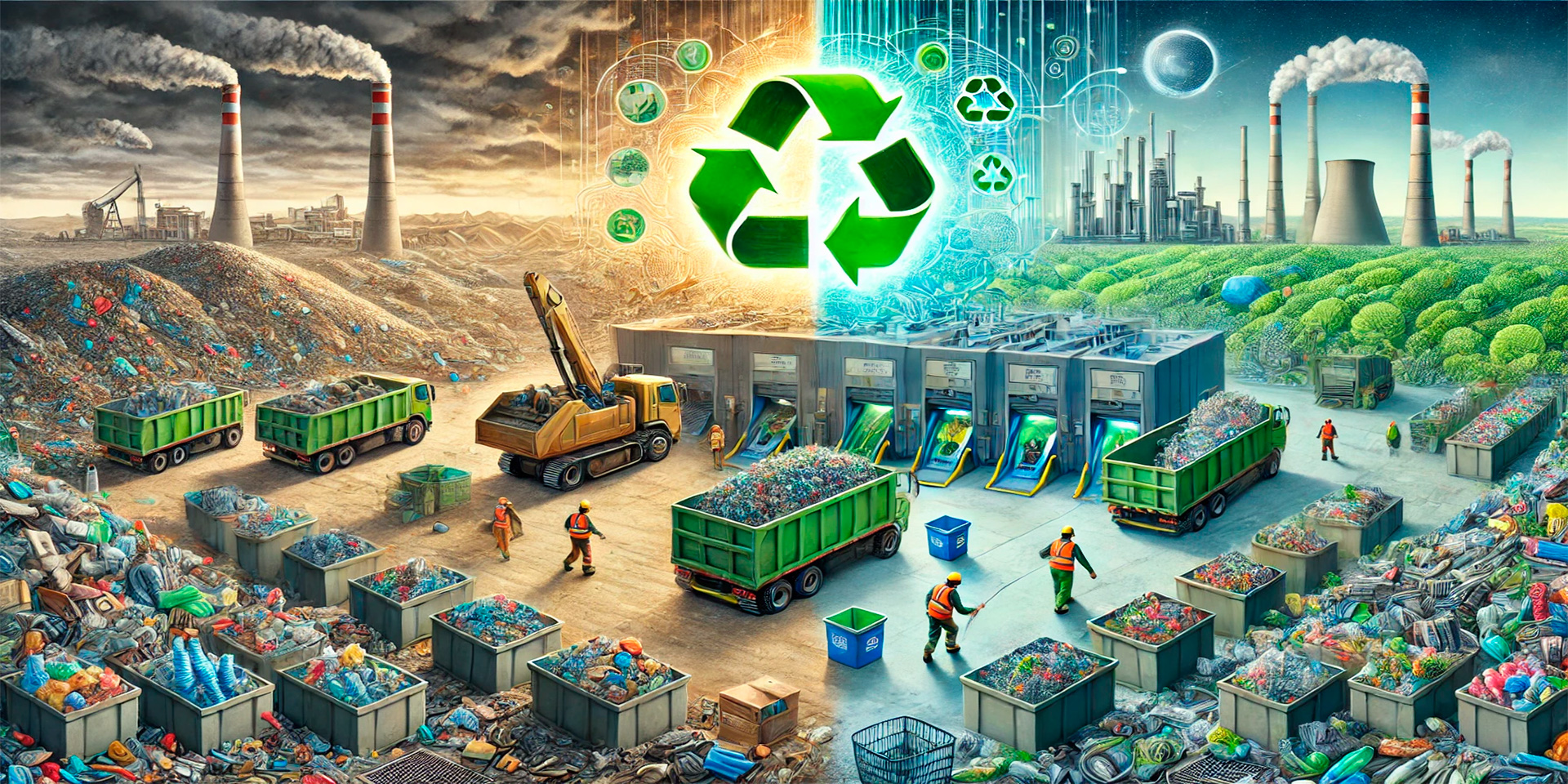
Natural disasters, such as hurricanes, floods, wildfires, and earthquakes, often leave behind widespread devastation. While insurance can provide vital financial support, it is common for policies to fall short in fully covering the cost of repairs and recovery. In these situations, disaster recovery loans can play a crucial role in bridging the gap between what insurance covers and the actual cost of rebuilding. This article explores how disaster recovery loans help fill the insurance gaps, enabling individuals, businesses, and communities to recover more effectively after catastrophic events.
The Role of Insurance in Disaster Recovery
Insurance is typically the first line of defense against the financial impact of a natural disaster. Homeowners, business owners, and governments often rely on insurance policies to cover property damage, lost income, and other losses caused by unforeseen events. However, insurance policies have limitations, such as deductibles, coverage limits, and exclusions, which can leave policyholders with unmet needs.
1. Common Gaps in Insurance Coverage
While insurance provides essential protection, it may not always cover the full scope of damage caused by a disaster. Policyholders may face challenges when their insurance payout falls short of the actual repair or replacement costs, requiring them to find alternative sources of funding.
Typical gaps in insurance coverage:
- Underinsurance: Many property owners have insufficient coverage limits, meaning their insurance payout may not fully cover the cost of rebuilding or repairing property.
- High deductibles: Insurance policies often include high deductibles, leaving policyholders responsible for paying a significant portion of the repair costs before insurance benefits kick in.
- Exclusions: Some policies may exclude specific types of damage, such as flooding or earthquake damage, which can leave homeowners and businesses without coverage for certain disaster events.
- Business interruption: While some businesses have coverage for lost income due to natural disasters, policies may not fully replace the loss, especially if the closure lasts longer than expected.

The Role of Loans in Filling Insurance Gaps
In cases where insurance coverage falls short, disaster recovery loans serve as a crucial financial tool to cover the remaining costs of recovery. These loans are specifically designed to assist individuals, businesses, and local governments in rebuilding and restoring operations after a natural disaster. By providing financial assistance beyond what insurance can cover, disaster recovery loans help ease the financial burden during the recovery process.
1. Types of Disaster Recovery Loans
Disaster recovery loans come in various forms, each designed to meet specific needs. Government agencies, financial institutions, and non-profit organizations often offer these loans to individuals and businesses that have sustained damage during a disaster. Some of the most common types of disaster recovery loans include:
Types of disaster recovery loans:
- Small Business Administration (SBA) Disaster Loans: SBA offers low-interest loans to businesses that have suffered physical or economic damage due to a disaster. These loans help businesses cover repair costs, lost income, and operational expenses.
- FEMA Individual Assistance Loans: The Federal Emergency Management Agency (FEMA) offers low-interest loans to individuals who are underinsured or uninsured. These loans can be used for home repairs, temporary housing, and other disaster-related expenses.
- Home Repair Loans: Many financial institutions offer home repair loans to homeowners whose insurance doesn’t fully cover the cost of rebuilding or repairing their property. These loans typically offer favorable terms, such as low interest rates and extended repayment periods.
- Community Disaster Loans: Local governments may be eligible for loans through FEMA or other financial institutions to fund the repair of public infrastructure, such as roads, schools, and utilities, that were damaged in a disaster.
2. How Disaster Recovery Loans Help with the Rebuilding Process
Disaster recovery loans can be used to cover a wide range of recovery expenses, including home repairs, business restarts, and community infrastructure rebuilding. These loans offer the financial support needed to restore operations and rebuild lives, helping individuals and communities move forward after a disaster.
The role of loans in recovery:
- Home repairs and rebuilding: Homeowners can use disaster recovery loans to repair or rebuild their homes after damage that exceeds their insurance coverage, such as structural repairs, replacement of lost belongings, and improvements to meet new safety standards.
- Business recovery: Businesses that face downtime due to natural disasters can use disaster recovery loans to cover operational costs, including employee salaries, rent, and the purchase of new equipment. This helps businesses resume their operations as quickly as possible.
- Restoring public services: Local governments can use disaster recovery loans to repair infrastructure, restore public services, and ensure that essential facilities such as schools, hospitals, and utilities are operational again.
- Covering unexpected costs: Loans can also help individuals and businesses cover unforeseen costs, such as the cleanup of hazardous materials or the replacement of infrastructure not covered by insurance policies.
3. Advantages of Using Disaster Recovery Loans
Disaster recovery loans offer several advantages over other forms of financial assistance, such as insurance claims or personal savings. They provide quick access to funds, offer flexible repayment options, and come with relatively low interest rates, making them an attractive option for those who need additional resources to complete the recovery process.
The advantages of disaster recovery loans:
- Quick access to funds: Many disaster recovery loans are designed to be disbursed quickly, allowing borrowers to access the funds they need to begin repairs and recovery without waiting for lengthy insurance payouts.
- Low-interest rates: Disaster recovery loans typically offer lower interest rates compared to other forms of credit, such as credit cards or personal loans, making them more affordable for borrowers.
- Flexible repayment terms: These loans often come with extended repayment periods, giving borrowers the flexibility to repay the loan over time without placing undue financial strain on them.
- Covering additional costs: In cases where insurance falls short, disaster recovery loans help cover expenses that insurance does not, ensuring that the recovery process is not halted due to financial limitations.

Challenges in Securing Disaster Recovery Loans
While disaster recovery loans offer significant benefits, securing them can be a challenging process. The application process often requires extensive documentation, including proof of damage, financial statements, and personal information. Furthermore, some individuals or businesses may face difficulties in qualifying for loans due to factors such as credit scores, income levels, or the severity of the disaster.
1. Loan Application Requirements
To qualify for disaster recovery loans, applicants typically need to provide a range of documentation, which can include insurance policies, tax returns, proof of ownership, and estimates for repair costs. This documentation is essential for assessing the level of assistance required but can be time-consuming to gather, especially for those already dealing with the immediate aftermath of a disaster.
Challenges in the loan application process:
- Lengthy paperwork: The application process for disaster recovery loans can be cumbersome, requiring detailed documentation of losses and repair estimates.
- Eligibility criteria: Borrowers must meet certain eligibility requirements, such as proving financial need, demonstrating the ability to repay, and having appropriate insurance coverage.
- Verification delays: Loan approval can be delayed by the need for verification, particularly when large-scale disasters affect multiple regions and the demand for loans increases.
2. Potential Barriers to Loan Approval
Not all applicants will be approved for disaster recovery loans, and certain factors may hinder loan approval. For example, individuals or businesses with low credit scores may face challenges in securing financing, even if they have substantial damage from the disaster. Additionally, businesses that have not documented their losses properly may find it difficult to qualify for a loan.
Barriers to loan approval:
- Low credit scores: A poor credit history can affect a borrower’s ability to qualify for low-interest disaster recovery loans, even if they are otherwise eligible for assistance.
- Inadequate documentation: If applicants fail to provide the necessary documents or evidence of damages, their loan applications may be denied or delayed.
- Existing debts: Businesses or individuals with significant existing debt may find it challenging to secure additional loans due to concerns over repayment ability.
Conclusion
Disaster recovery loans play an essential role in bridging the gap left by insurance coverage, enabling individuals, businesses, and communities to recover from the financial impact of natural disasters. While these loans provide crucial financial support during difficult times, they are not without their challenges. The application process can be time-consuming, and certain borrowers may face barriers to approval. However, when used strategically, disaster recovery loans can significantly ease the financial burden of rebuilding, helping communities get back on their feet and recover more quickly. By understanding the benefits and challenges of these loans, borrowers can better navigate the recovery process and ensure that they have the necessary resources to rebuild their lives after disaster strikes.






